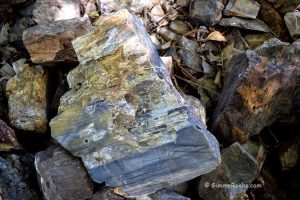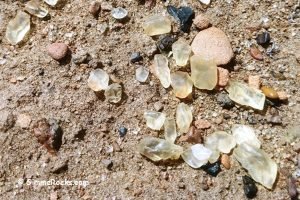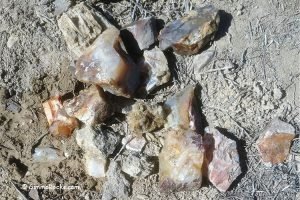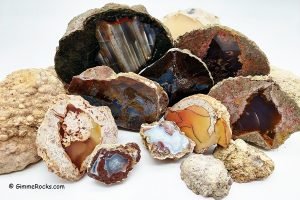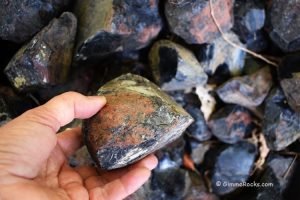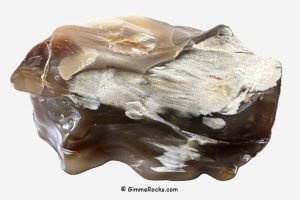Sunstone is a gem-quality feldspar known for a distinct optical phenomenon called aventurescence, or the Schiller effect (in German, Schiller literally means "shimmer"). This phenomenon is the product of tiny metallic inclusions inside the mineral, typically hematite, goethite, or copper.
Sunstone owes its name to that very shimmering quality. Other names of sunstone are aventurine feldspar and heliolite. The name "sunstone" can also refer to two types of feldspar: oligoclase and labradorite.
A particularly notable variety is Oregon Sunstone, found exclusively in Eastern Oregon’s desert. Unlike other types, this sunstone is a labradorite that contains tiny flecks of copper, which give it a unique and sought-after appearance.
Sunstone Crystal Formation
The process of sunstone formation is fairly complicated and lengthy. It involves extreme heat, pressure, and subsequent cooling. All that may take millions of years. The formation begins in a molten lava flow that, when it cools, allows the crystallization of feldspar with tiny metallic inclusions that would later create the Schiller effect. Then, the cooled and solidified lava breaks down, releasing the sunstone crystals.
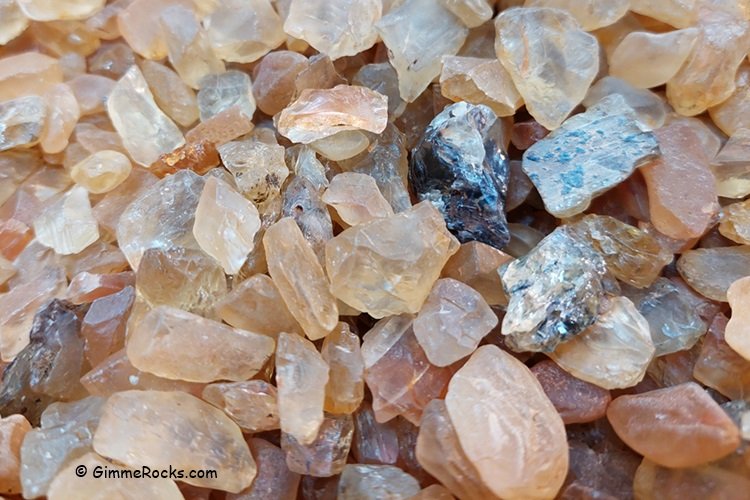
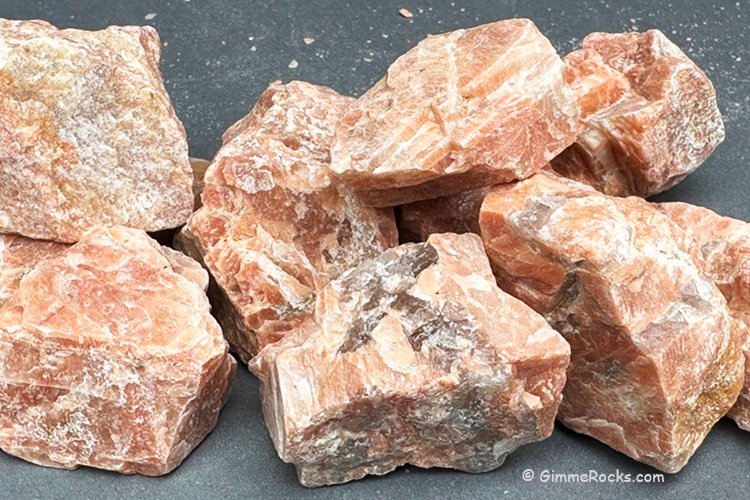
Sunstone Color and Transparency
Aventurescence provides sunstone with a vibrant shimmer of gold, blue, and green coming from the tiny hematite, goethite, and copper crystals within the mineral.
The overall coloring of sunstones ranges from pale yellow to pink, deep red, and orange, depending on the type and the amount of inclusions. Shades of green, blue, or gray can also occur, but they are much rarer.
The level of transparency of individual sunstones varies, going from mostly transparent to translucent. Opaque specimens can also occur.
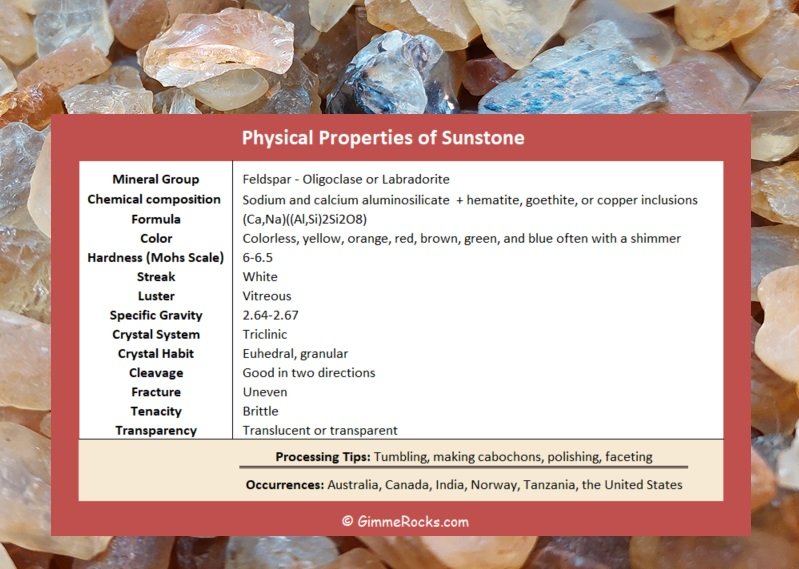
Sunstone Localities
Sunstone occurs almost on every continent of our Planet. Among known locations are Australia, Brazil, Canada, India, Madagascar, Mexico, Norway, Russia, and Tanzania.
Notable deposits in the United States are in Arkansas, New Jersey, New Mexico, New York, North Carolina, Oregon, Pennsylvania, South Carolina, Virginia, and Utah.
It is worth noting that the Eastern Oregon desert is the only place where Oregon Sunstone can be found. Unlike other varieties, this particular sunstone is a labradorite that contains tiny flecks of copper. All that gives the mineral a unique appearance, which is very popular and sought-after among collectors.
Types and Varieties
Fluctuations in sunstone varieties and attributable features tend to be connected to their place of origin. The coloring and optical effects characteristic of each variety of sunstones give them their very own beauty and appeal.
Oregon: Oregon Sunstone is known for its vibrant colors, such as coppery red, gold, and green, and its remarkable optical effects. This sunstone's significance is such that the Oregon legislature made it an official state gemstone.
Oregon Sunstone: The Unique Gem of the High Desert
Canada: The sunstone variety from Ontario and Québec features brilliant fire against a darker reddish, brown, and gray background.
India: The Indian sunstone variety is known for its warm orange and red hues. The weight of Indian cabochons often exceeds 100 carats.
Tanzania: Opaque specimens found in Tanzania exhibit a wide range of colors from yellow and red to gray and brown with stars or cat's-eyes effect.
Norway: Norwegian sunstones tend to have a reddish, orange, brown, and gray base, with flashes of brilliant blue or silver.
Value of Raw Sunstone
The value of raw sunstones depends on many factors, including their origin, color, and optical effects. It can range from two to a few hundred U.S. dollars per carat.
The most significant valuation factor is often the level of aventurescence. The stronger the mineral inclusions reflect light, the higher the mineral's value. Rare colors such as green and blue also contribute to higher valuation.
Faceted Oregon Sunstone can cost up to 4,000 U.S. dollars per carat. Unique copper content gives this variety of sunstones a rich reddish-orange hue and rare optical effects. Collectors are happy to pay a greater price for it.
Lapidary Use
Sunstone is a durable mineral for various lapidary applications, from cabochons to beads. Sunstone also takes excellent polish, tumbles well, makes excellent carving, and can be faceted into gemstones.
The hardness of sunstone is still not high enough to be completely safe from scratching or other damage from impact or abrasion. Make sure you take good care of your sunstone.
Sunstone Crystal Spirituality and Lore
In addition to being an interesting collection and decoration piece, sunstone has a place in ancient and even modern culture.
Vikings used sunstone to navigate the seas when the sun was covered by fog or clouds. They believed it could help them find the sun's position even in bad weather.
Native Americans also had a special connection with sunstone. They believed it had healing powers and could bring good luck. They used it in ceremonies and carried it with them for protection.
Today, sunstone is still popular in modern spirituality. Some people believe it boosts creativity and brings out positive energy. Others use it for meditation or to balance their emotions.

